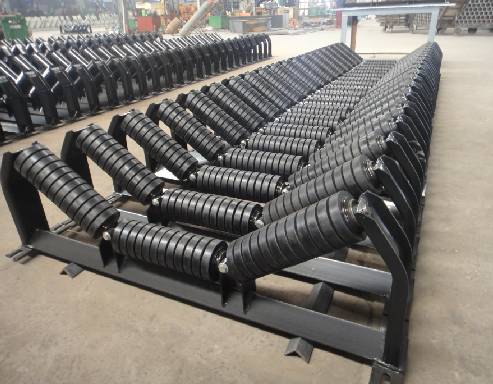 Afrikaans
Afrikaans  Albanian
Albanian  Amharic
Amharic  Arabic
Arabic  Armenian
Armenian  Azerbaijani
Azerbaijani  Basque
Basque  Belarusian
Belarusian  Bengali
Bengali  Bosnian
Bosnian  Bulgarian
Bulgarian  Catalan
Catalan  Cebuano
Cebuano  Corsican
Corsican  Croatian
Croatian  Czech
Czech  Danish
Danish  Dutch
Dutch  English
English  Esperanto
Esperanto  Estonian
Estonian  Finnish
Finnish  French
French  Frisian
Frisian  Galician
Galician  Georgian
Georgian  German
German  Greek
Greek  Gujarati
Gujarati  Haitian Creole
Haitian Creole  hausa
hausa  hawaiian
hawaiian  Hebrew
Hebrew  Hindi
Hindi  Miao
Miao  Hungarian
Hungarian  Icelandic
Icelandic  igbo
igbo  Indonesian
Indonesian  irish
irish  Italian
Italian  Japanese
Japanese  Javanese
Javanese  Kannada
Kannada  kazakh
kazakh  Khmer
Khmer  Rwandese
Rwandese  Korean
Korean  Kurdish
Kurdish  Kyrgyz
Kyrgyz  Lao
Lao  Latin
Latin  Latvian
Latvian  Lithuanian
Lithuanian  Luxembourgish
Luxembourgish  Macedonian
Macedonian  Malgashi
Malgashi  Malay
Malay  Malayalam
Malayalam  Maltese
Maltese  Maori
Maori  Marathi
Marathi  Mongolian
Mongolian  Myanmar
Myanmar  Nepali
Nepali  Norwegian
Norwegian  Norwegian
Norwegian  Occitan
Occitan  Pashto
Pashto  Persian
Persian  Polish
Polish  Portuguese
Portuguese  Punjabi
Punjabi  Romanian
Romanian  Russian
Russian  Samoan
Samoan  Scottish Gaelic
Scottish Gaelic  Serbian
Serbian  Sesotho
Sesotho  Shona
Shona  Sindhi
Sindhi  Sinhala
Sinhala  Slovak
Slovak  Slovenian
Slovenian  Somali
Somali  Spanish
Spanish  Sundanese
Sundanese  Swahili
Swahili  Swedish
Swedish  Tagalog
Tagalog  Tajik
Tajik  Tamil
Tamil  Tatar
Tatar  Telugu
Telugu  Thai
Thai  Turkish
Turkish  Turkmen
Turkmen  Ukrainian
Ukrainian  Urdu
Urdu  Uighur
Uighur  Uzbek
Uzbek  Vietnamese
Vietnamese  Welsh
Welsh  Bantu
Bantu  Yiddish
Yiddish  Yoruba
Yoruba  Zulu
Zulu Spiral Design for Wing Pulley Mechanisms in Mechanical Applications
The Spiral Wing Pulley Innovations in Mechanical Engineering
In the realm of mechanical engineering, the development of efficient and versatile components is crucial for enhancing performance across various applications. One such component that has garnered attention in recent years is the spiral wing pulley. This unique design not only optimizes power transmission but also offers numerous advantages in terms of weight reduction, space efficiency, and overall functionality. In this article, we will explore the design, functionality, and potential applications of the spiral wing pulley.
Understanding the Spiral Wing Pulley Design
At its core, the spiral wing pulley integrates a traditional pulley mechanism with a spiral wing structure that significantly improves its performance. The standard pulley is a simple wheel with a grooved rim around which a belt or rope can run, primarily used to change the direction of force or transfer power. However, the introduction of spiral wings to the pulley design enhances its capabilities.
The spiral wings are designed to create a more effective surface area for the belt or rope to grip. This not only reduces slippage but also distributes the load more evenly across the pulley, thereby improving durability and extending the service life of the component. The spiral design can also reduce the overall weight of the pulley, as the material can be selectively removed without compromising strength. This results in a lighter, more efficient pulley that is particularly valuable in applications where weight is a critical factor.
Advantages of Spiral Wing Pulleys
1. Increased Efficiency The spiral structure allows for better load distribution and reduced slippage. This translates into higher efficiency in power transmission, which is essential in many mechanical systems. Higher efficiency means less energy consumption, contributing to lower operational costs.
2. Weight Reduction By incorporating a spiral design, engineers can optimize material usage, leading to a lighter pulley. This is particularly beneficial in automotive and aerospace applications where every gram counts.
3. Space-Saving Design The compact nature of the spiral wing pulley allows for a more streamlined integration into machinery. This can lead to smaller overall system designs and reduced footprints for various applications.
spiral wing pulley

4. Enhanced Performance The advanced grip and load-carrying capabilities of the spiral wing pulley can enhance the overall performance of the machinery it is incorporated into. It can support higher loads and higher speeds, making it suitable for demanding environments.
Applications of Spiral Wing Pulleys
Given its unique advantages, the spiral wing pulley finds applications in a variety of industries.
1. Automotive Industry In vehicles, these pulleys can be used in engine systems, where they contribute to more efficient power transfer from the engine to other components, such as the alternator or water pump. Their lightweight nature helps improve fuel efficiency.
2. Aerospace Engineering The aerospace sector is continuously seeking ways to reduce weight while maintaining performance and safety. Spiral wing pulleys can be employed in various control systems and mechanisms, enhancing the overall efficiency of aircraft systems.
3. Industrial Machinery In manufacturing equipment, spiral wing pulleys can improve the reliability and efficiency of conveyor systems, cranes, and other lifting equipment, where consistent and reliable power transfer is crucial.
4. Renewable Energy Systems With the growing emphasis on renewable energy sources, spiral wing pulleys can be useful in wind turbines and similar applications, where they can enhance the efficiency of energy conversion and transmission systems.
Conclusion
The spiral wing pulley represents an exciting advancement in mechanical engineering, combining traditional pulley functionality with innovative design features that optimize performance. Its numerous advantages, including increased efficiency, weight reduction, and versatile applications, make it a compelling choice in various industries. As technology continues to evolve, we can expect to see further enhancements to components like the spiral wing pulley, driving innovation across multiple sectors. The future of mechanical design looks promising, with spiral wing pulleys poised to play a significant role in the development of more efficient and effective machinery.
-
Revolutionizing Conveyor Reliability with Advanced Rubber Lagging PulleysNewsJul.22,2025
-
Powering Precision and Durability with Expert Manufacturers of Conveyor ComponentsNewsJul.22,2025
-
Optimizing Conveyor Systems with Advanced Conveyor AccessoriesNewsJul.22,2025
-
Maximize Conveyor Efficiency with Quality Conveyor Idler PulleysNewsJul.22,2025
-
Future-Proof Your Conveyor System with High-Performance Polyurethane RollerNewsJul.22,2025
-
Driving Efficiency Forward with Quality Idlers and RollersNewsJul.22,2025





























